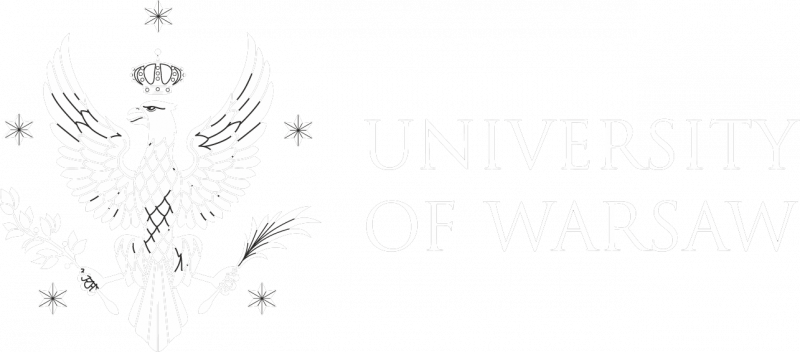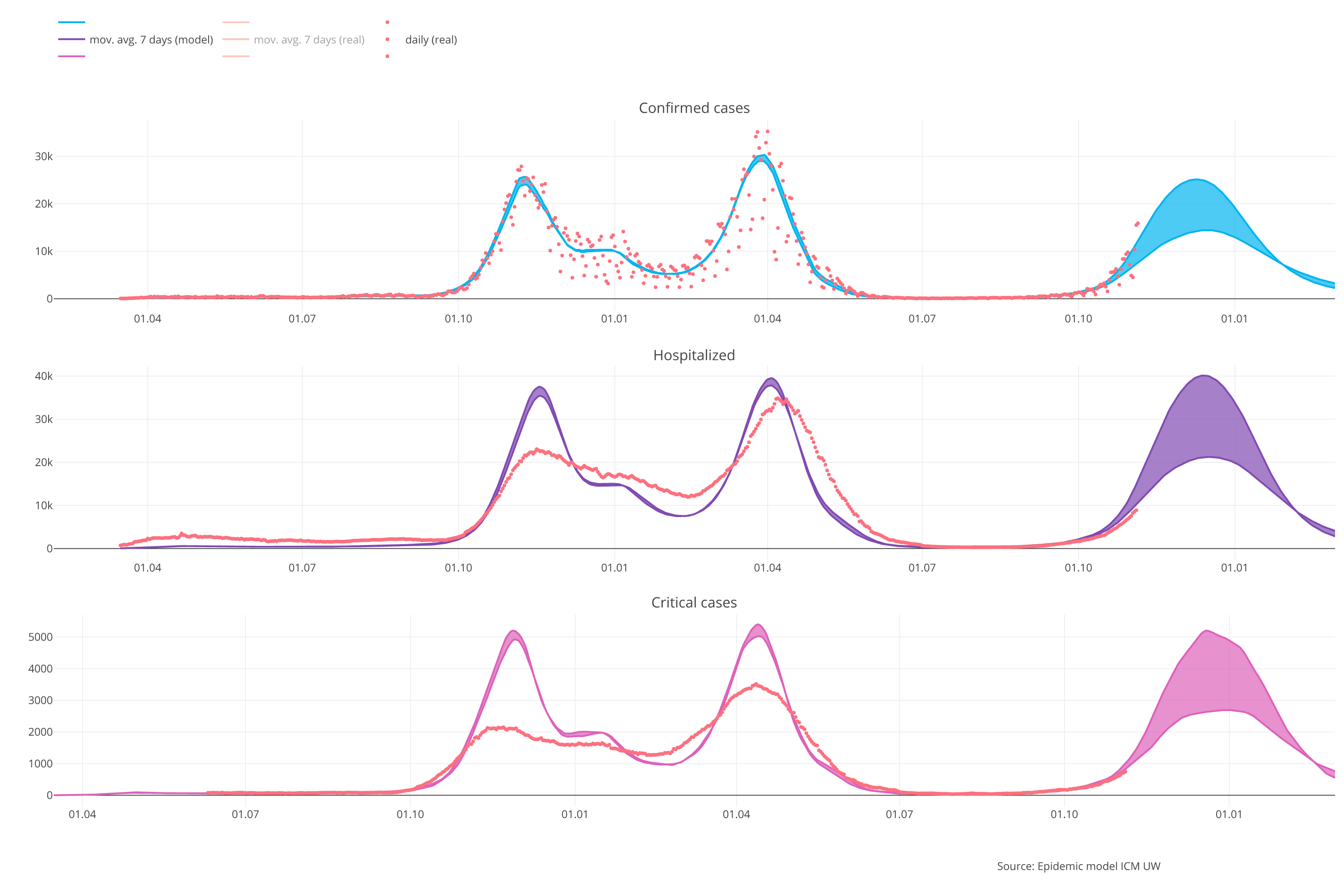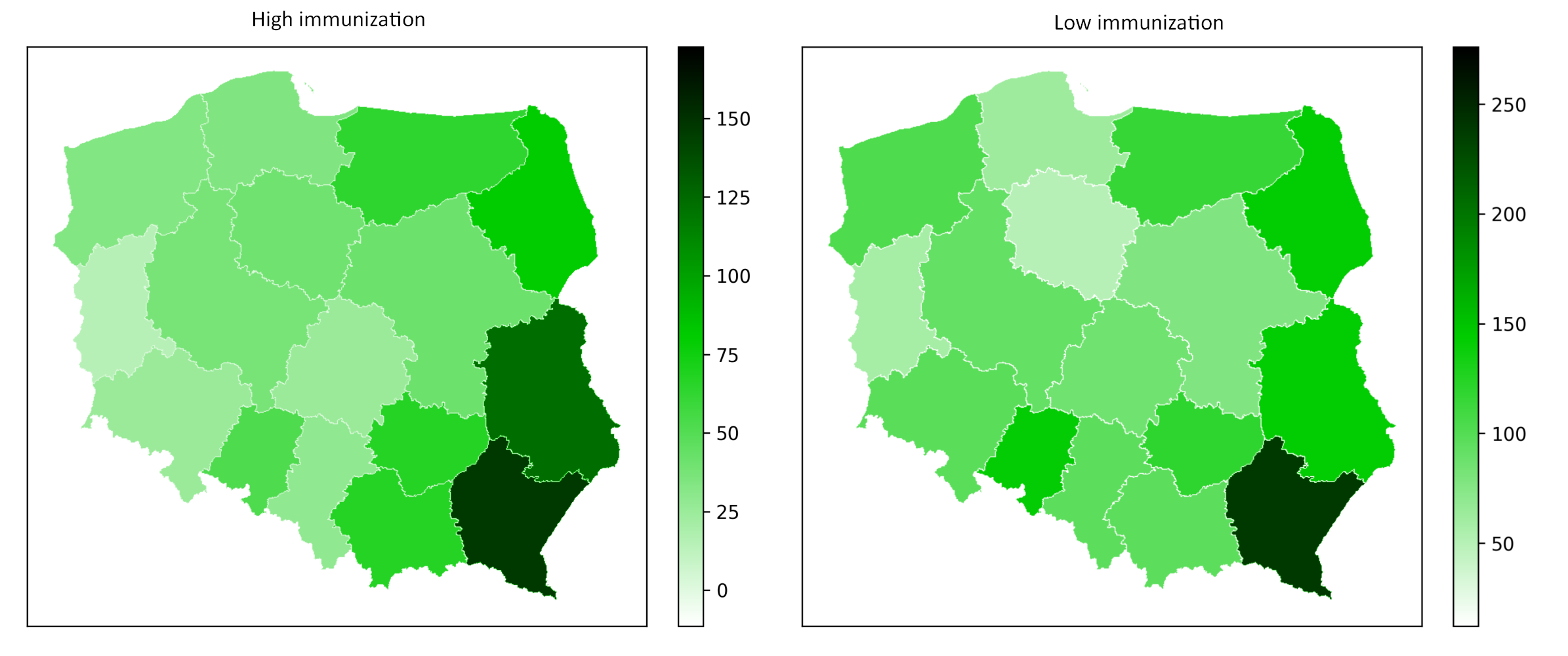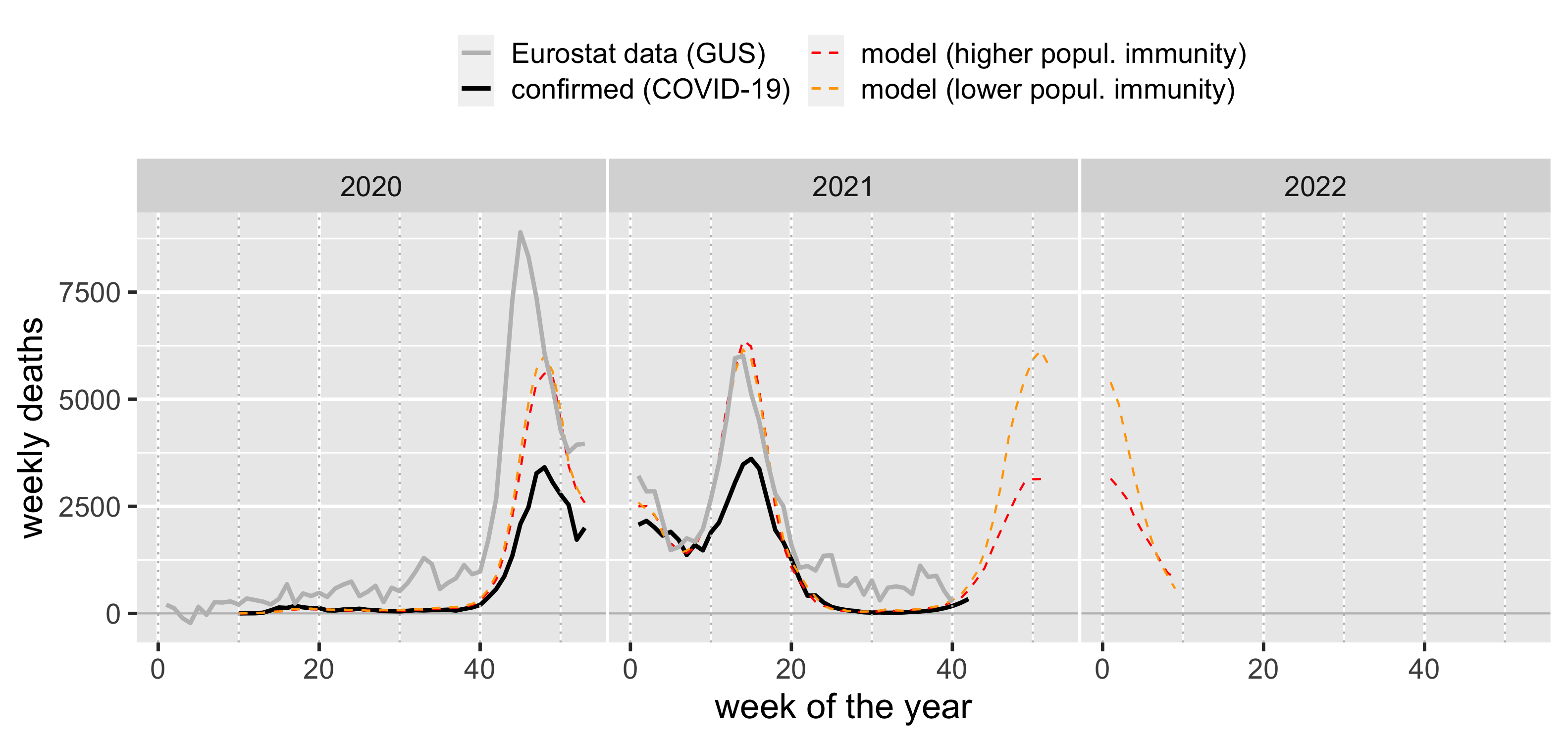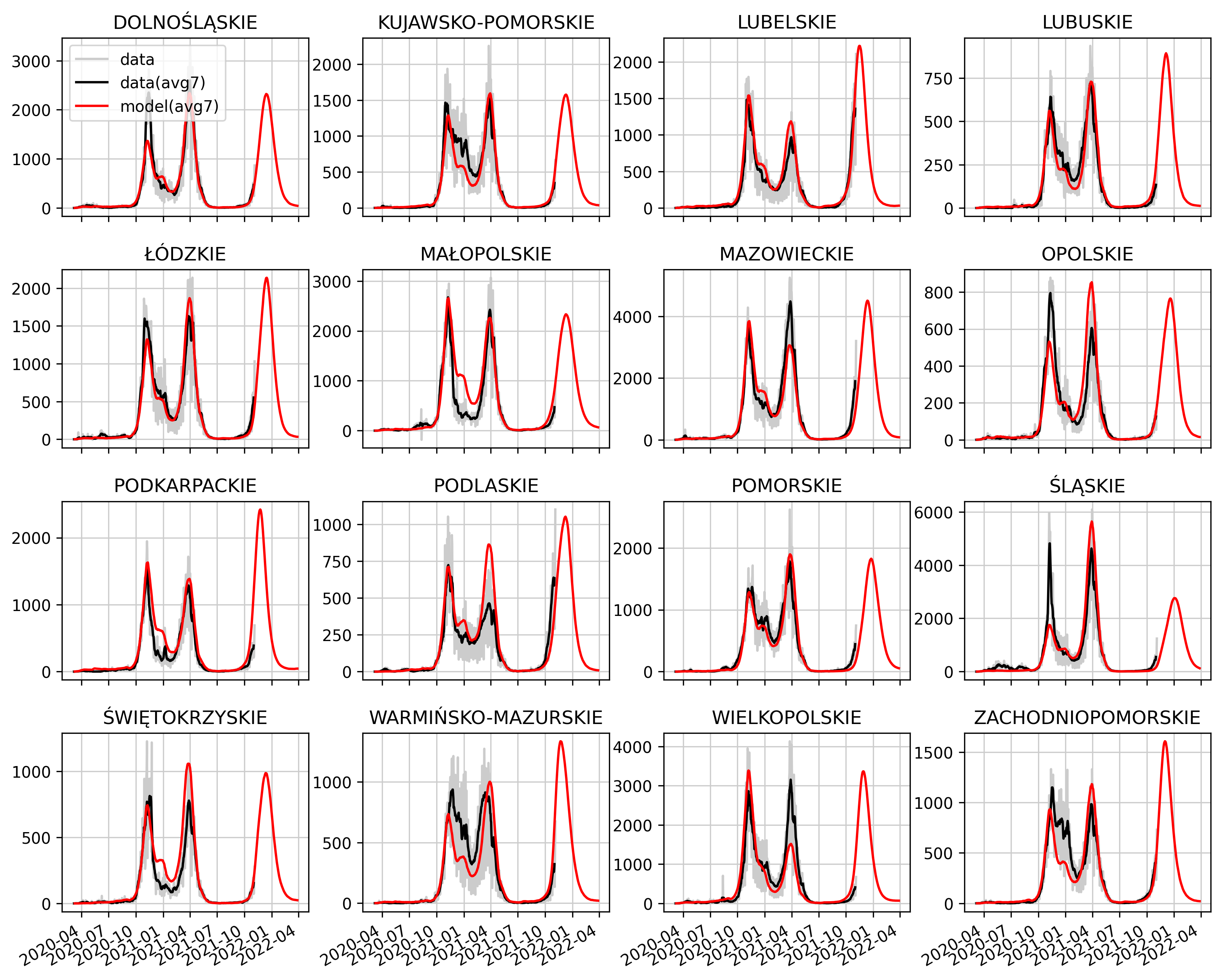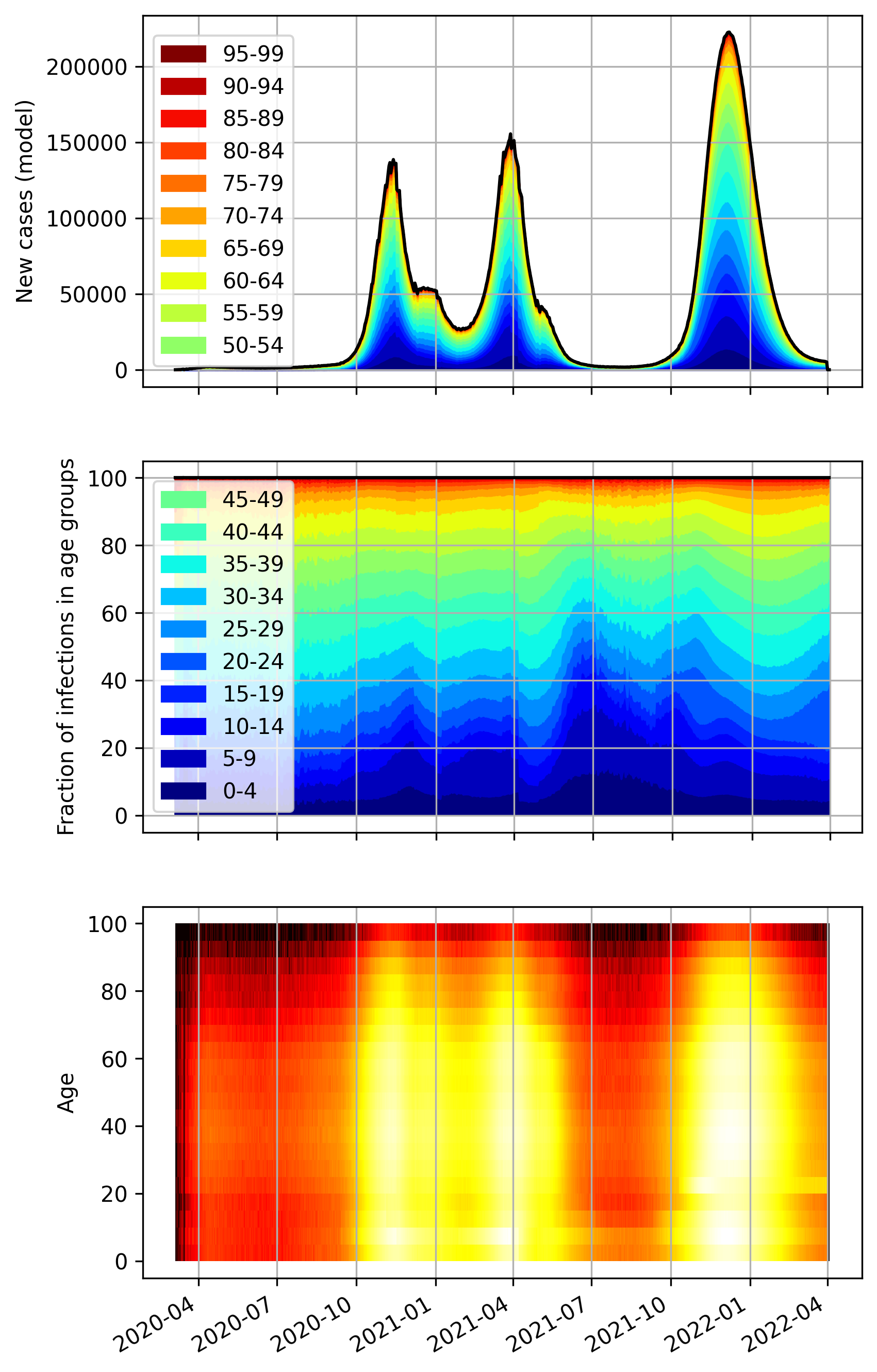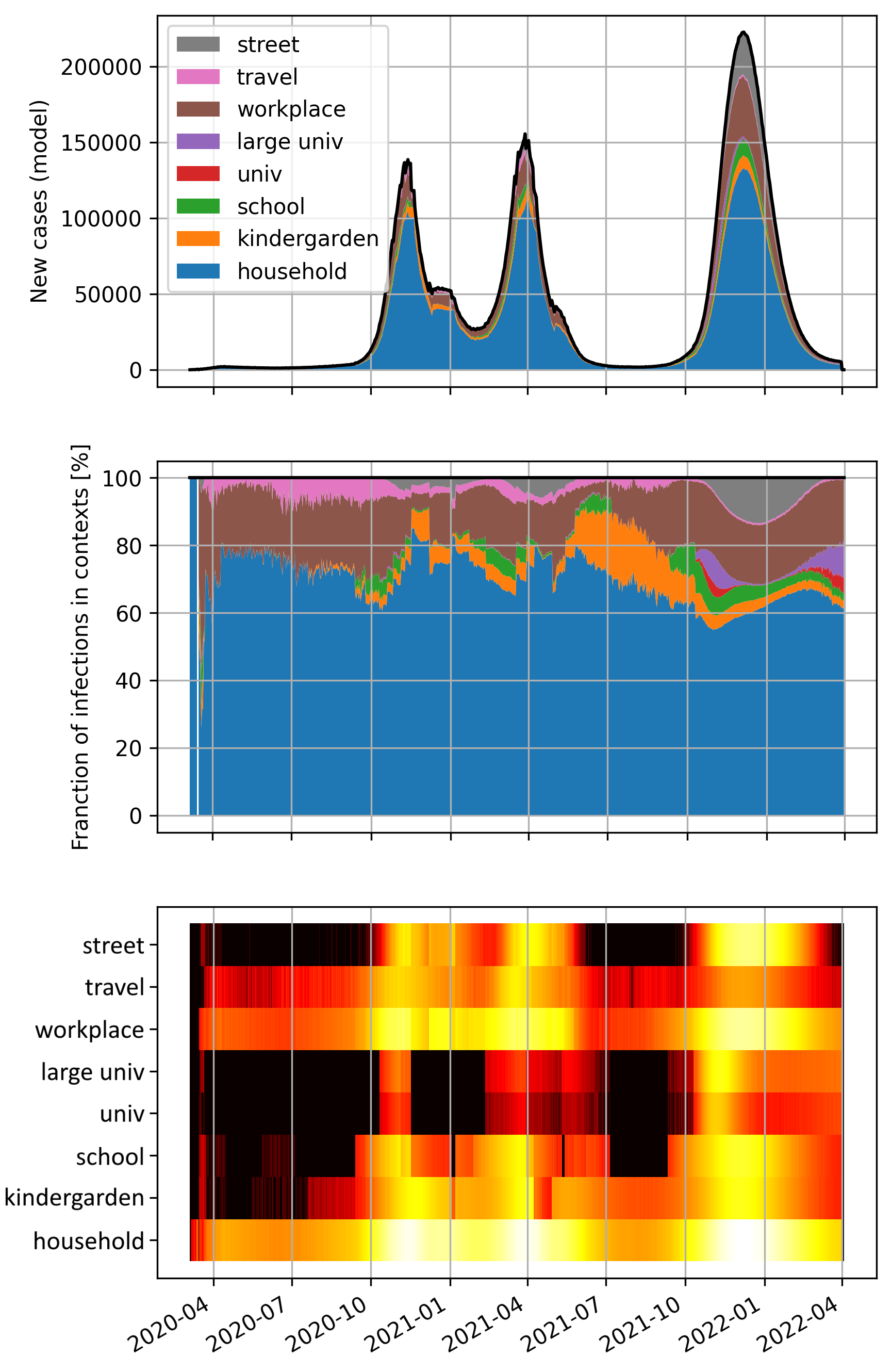
Dr. Franciszek Rakowski
ICM Epidemiological Model
spatially and contextually resolving
Our model is spatially and contextually resolving. This means that we can follow the spreading of the epidemic on a geographic grid at a resolution of 1 km2 and that the physical contacts through which the virus is transmitted take place in various types of places characteristic of our lives. Currently, we have defined separate categories: households, workplaces, kindergartens, schools, colleges, travel, and random street meetings.
The course of the disease that each virtual inhabitant undergoes in our model corresponds to the typical course of the COVID-19 disease. However, the key parameters of the model, i.e. the baseline virus transmissibility and our tendency to leave home with mild symptoms, are calibrated, in Bayesian fashion, to the actual course of the epidemic.
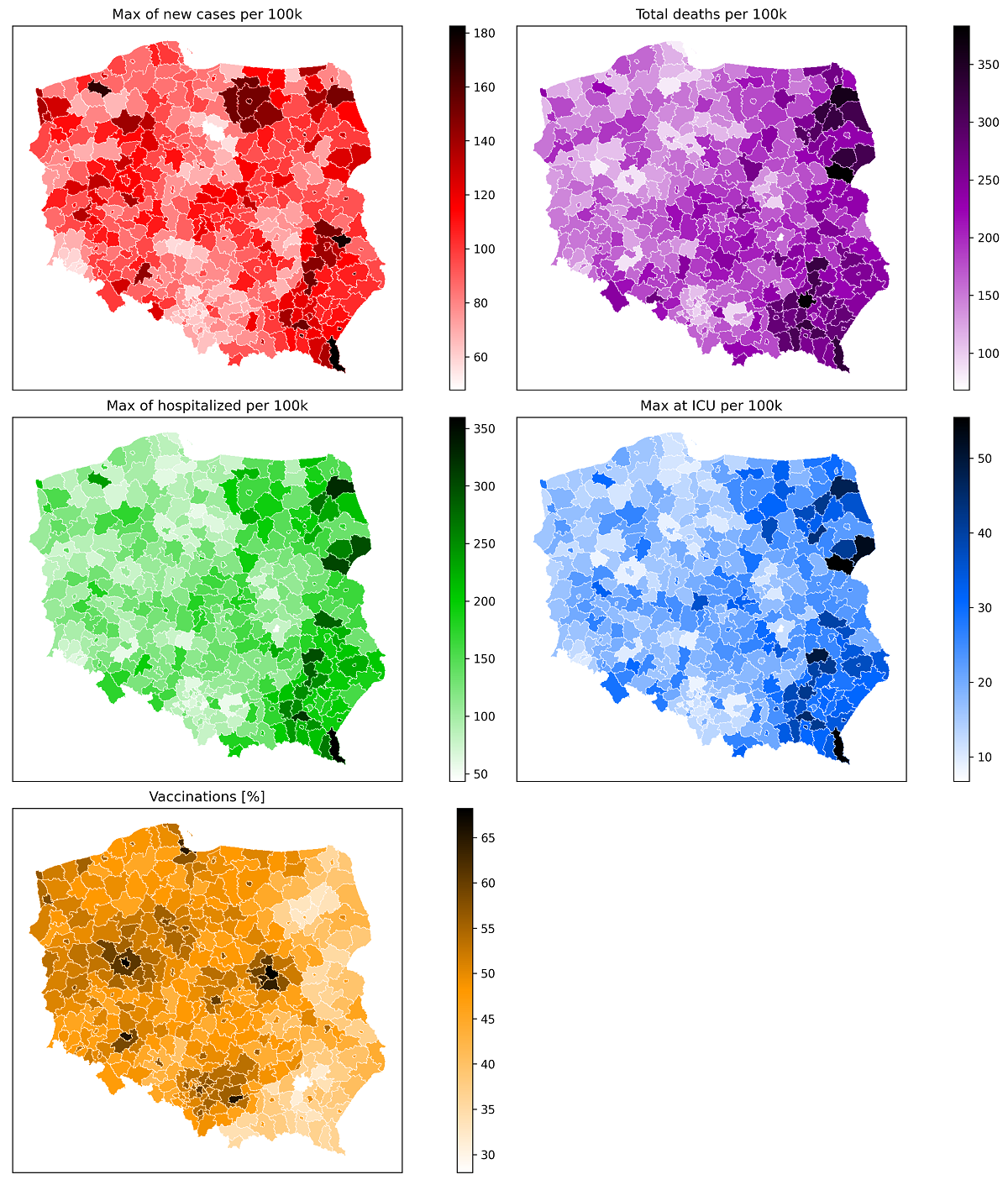
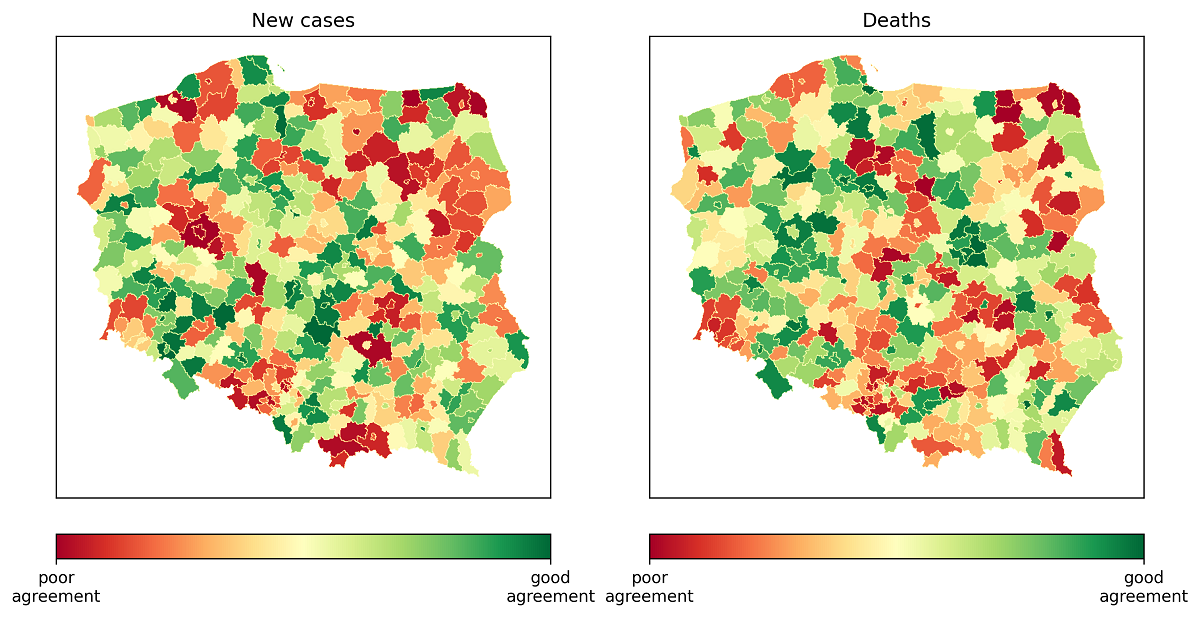
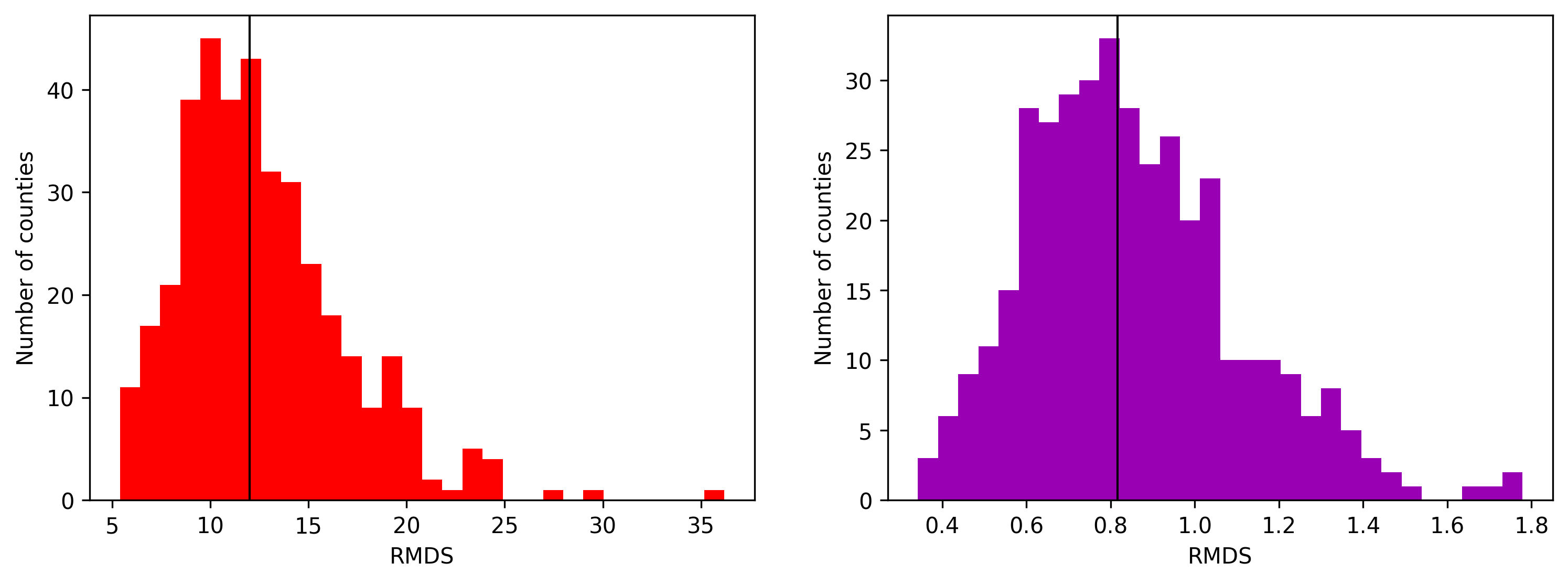
Simulation of the spread of COVID-19 in Poland
Model data visualization in the Visnow platform
Model data visualization in the Visnow platform
Partners
Papers
Partners
